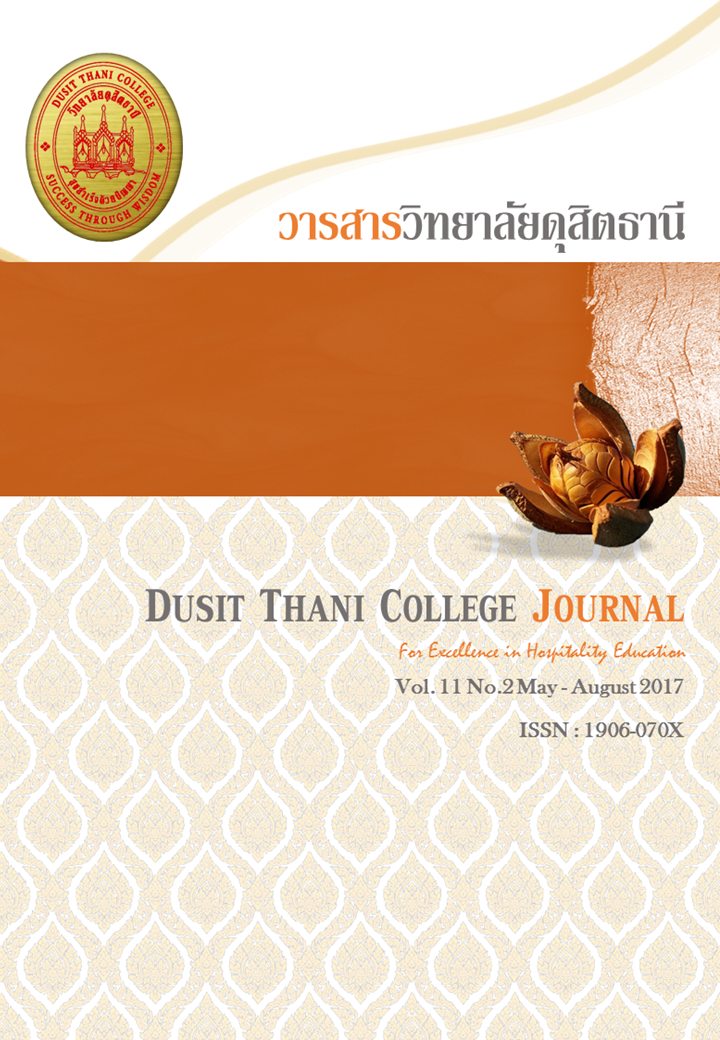Best Practices on Reputation Management of Higher Education Institutions in World Reputaton Rank การปฏิบัติที่เป็นเลิศด้านการจัดการชื่อเสียงของสถาบันอุดมศึกษาที่มีชื่อเสียงระดับโลก
Main Article Content
Abstract
This qualitative research aimed to 1) examine the objective performance indicators in world reputation rank of higher education institutions, and 2) analyze the best practices on reputation management of world reputation rank in higher education institutions. The research instruments are document analysis form and in-depth interview topic form. Content analysis was employed in the data analysis.
The research results were as follows:
1) The objective performance indicators in world reputation rank of higher education institutions are Research-research volume not less than 400 projects in each year, having highest research income, research global impact for commercial and development purposes, excellence research quality, and receiving awards; Citations-highly cited; Teaching-the learning environment-lots of and various curriculums, outstanding curriculums for attracting all students, increasing class on MOOCs, learning by doing, integrated on research and teaching; International outlook-rising on international instructors, staff, and students, not less than 4,000 research paper publishing in each year; Industry income-highly different and having income from licence fee, start-ups and spin out.
2) The best practices on reputation management of world reputation rank in higher education institutions are composed of 1) process/procedure/method/technique, 2) results/ performance/benefit 3) recognition and award and 4) success factors.
Article Details
Article Screening Policy
- All research and academic articles to be published must be considered and screened by three peer reviews in the relevant field / article.
- All articles, texts, illustrations and tables published in the journal are the personal opinions of the authors. Editors don't always have to agree. And no responsibility whatsoever is the sole responsibility of the author.
- The articles to be published must never be published. Where did you first publish? And not in the consideration of other journals If the audit found that there has been a duplicate publication It is the sole responsibility of the author.
- Any article that the reader sees as being plagiarized or impersonated without reference. Or mislead the work of the author Please let the journal editor know it will be your greatest blessing.
References
Boonyakij, Boondee & Siriphanich, Kamonwan. (2003). Benchmarking: Shortcut to business excellence. 3rd ed. Bangkok: Thailand Productivity Institute.
Chaisamrej, Rungrat. (2013). Corporate reputation: Survey of literature review and theoretical concepts for factor driven study on reputation in all business dimensions. [Online]. Available: https://www.ejournal.su.ac.th/upload/662.pdf [2015, March 2]
Delgado-Márquez, Blanca L., Bondar, Y. & Delgado-Márquez, L. (2012). Higher education in a global context: Drivers of top-universities’ reputation. Problems of Education in the 21st Century 40: 17-25. [Online]. Available from: https://ehis.ebscohost.
com/eds/pdfviewer/pdfviewer?sid=c160ca59-eff5-459b-af5f-811ace11cecb@
sessionmgr104&vid=2&hid=4 [2015, February 26]
Dickinson-Delaporte, S., Beverland, M. & Lindgreen, A. (2010). Building corporate reputation with stakeholders: Exploring the role of message ambiguity for social marketers. European Journal of Marketing 44,11/12: 1856-1874. [Online]. Available from: https://www.emeraldinsight.com/journals.htm?issn=03090566&
volume=44&issue=11&articleid=1891433&show=pdf [2015, March 18]
Dowling, R. (2002). Creating corporate reputations: Identity, image, and performance. Oxford: Oxford University Press.
Gaines-Ross, L. (2008). Corporate reputation: 12 steps to safeguarding and recovering reputation. Hoboken: John Wiley & Sons.
Haywood, R. (c2005). Corporate reputation, the brand & the bottom line: Powerful proven communication strategies for maximizing value. London: Kogan Page.
He, Huani & Pitpreecha, Rungnapha. (2011). Indicators for reputation measurement of communication universities in China. Journal of Public Relations and Advertising 4,2: 102-123.
Jaicharnsukkij, Phot. (2009). Corporate image & brand management. [Online]. Available: https://www.drphot.com/images/journal/2552/brandmarketing52/Article%20
Corp%20Image%20Apr%2009.pdf [2015, June 2]
Kumar, S. (1999). Valuing corporate reputation. In Reputation management: Strategies for protecting companies, their brands and their directors, 25-33. London: Kogan Page.
Laukaikul, Sirikul. (2007). Sufficiency Branding: Sustainable Brand. Bangkok: Manager Weekly.
Morrissey, P. (2012). Higher education and the imperative to build reputations. Asian Education and Development Studies 1,2: 112-123. [Online]. Available from: https://www.emeraldinsight.com/journals.htm?issn=2046-3162&volume=1&issue =2&articleid=17035936&show=pdf&PHPSESSID=j7mph2h6qinuj0hipcjhn61l83 [2013, March 4]
Oxford University Centre for Corporate Reputation. (2008). Research into all aspects of reputation. [Online]. Available from: https://www.sbs.ox.ac.uk/facultyresearch/
reputation/research-and-publications [2016, September 14]
Pitpreecha, Rungnapha. (2010). Indicators for measuring business reputation in Thailand. Bangkok: Communication Arts, Chulalongkorn University.
Pittayapitak, Tanya & Vichianpan, Thanyawich. (2012). Transfer innovation: Principles and patterns. SWU Library Science Journal. 5,1 (January-June): 107-118.
Ruenrom, Guntalee. (2013). Corporate brand success valuation. Bangkok: Cyberprint.
Saengratanakul, Puttaporn. (2010). How do we create corporate brand? [Online]. Available: https://www.brandage.com/Modules/DesktopModules/
Article/ArticleDetail.aspx?tabID=7&ArticleID=6518&ModuleID=701&GroupID=1532 [2013, Septermber 10]
Santawee, Kritchanat. (2012). The factors influencing corporate reputation and corporate reputation management in Thailand. Ph.D. dissertation, Chulalongkorn University.
Sherman, M. L. (1999). Making the most of your reputation. In Reputation management: Strategies for protecting companies, their brands and their directors, 9-15. London: Kogan Page.
Suomi, K. & Jarvinen, R. (2013). Tracing reputation risks in retailing and higher-education services. Journal of Retailing and Consumer Services 20: 207-217. [Online]. Available from: https://www.sciencedirect.com/science/article/pii/ S0969698912001518 [2015, March 4]
Times Higher Education World Reputation Rankings. (2013). [Online]. Available from: https://www.timeshighereducation.co.uk/world-university-rankings/2013/
reputation-ranking [2013, July 14]
Wutthirong, Phayat. (2012). Innovation management concept & best practice. Bangkok: Chulalongkorn University Press.
Zaman, A. (2004). Reputational risk: How to manage for value creation. London: Prentice Hall.


